Family Lycaenidae
This is the second largest family of butterflies.
Subfamily Poritiinae
| Malayan Gem (Poritia philota philota) | Sumatran Gem (Poritia sumatrae sumatrae) |
| - |  |
Subfamily Miletinae
| Moth Butterfly (Liphyra brassolis abbreviata) | Bigg's Brownie (Miletus biggsii biggsii) | Brown-band Brownie (Miletus gopara gopara) | Great Brownie (Miletus symethus petronius ) |
| - | - | - | - |
| Lesser Darkie (Allotinus unicolor unicolor) | Pale Mottle (Logania marmorata damis) | Apefly (Spalgis epius epius) | |
| - | - | - |
Subfamily Curetinae
| Malayan Sunbeam (Curetis santana malayica) | Sumatran Sunbeam (Curetis saronis sumatrana) |
| - | - |
Subfamily Lycaeninae
There are 2 species of gems.
Sumatran Gem (Poritia sumatrae sumatrae)
There are 8 species of these blues in Singapore that look similar to each other in that they have pale underwings with black spots.
Common Hedge Blue (Acytolepis puspa lambi)
It has medium black spots on the hind and fore underwings.Common Pierrot (Castalius rosimon rosimon)
It has many big black spots on the underwing.Elbowed Pierrot (Caleta elna elvira)
It has the most black on the underwing than the rest. In fact, some of the black spots are so large that they connect to form an elbow.Quaker (Neopithecops zalmora zalmora)
Like the Common Hedge Blue, but it has a medium black spot on the hind underwings.Malayan (Megisba malaya sikkima)
Like the Common Hedge Blue, but it has a few medium black spots on the hind underwings.Lesser Grass Blue (Zizina otis lampa)
The underwings are pale with small black spots, like the Pale and Pygmy Grass Blues. However, it differs from them by having less distinct bands or spots on the trailing edge of the underwings.Pygmy Grass Blue (Zizula hylax pygmaea)
Like the Lesser Grass Blue, but the trailing edge of the underwings is lined by a few dark bands.Pale Grass Blue (Zizeeria maha serica)
Like the Lesser Grass Blue, but the trailing edge of the underwings is lined by dark spots.The next set of blues generally have one or two black ocelli with orange surround on the lower under hindwings.
Cycad Blue (Chilades pandava pandava)
Also known as Plains Cupid. Looks like Gram Blue and Indian Cupid. All three have four black spots, in addition to mainly two black spots which are surrounded by an orange colour, all on the underside of the hindwing. It can be distinguished from them by the orange colour around more than two black spots on the underside of the hindwings. Some specimens may show five spots instead of four.Gram Blue (Euchrysops cnejus cnejus)
Similar to Indian Cupid, but two distinct orange patches can still be made out.Indian Cupid (Everes lacturnus rileyi)
Similar to Cycad Blue but the two black spots in the orange colour are prominent and the orange is more extensive than Gram Blue's.Silver Royal (Ancema blanka blanka)
It lacks the four black spots of the above three species, but has orange colour around the two hind black spots on the underside of the hindwing. The underwings are silvery in colour.Ciliate Blue (Anthene emolus goberus)
It has only one lower black spot instead of four and there is only one black spot in the orange area.Pointed Ciliate Blue (Anthene lycaenina miya)
It has only one higher black spot instead of four and there is only one black spot in the orange area.Forget-Me-Not (Catochrysops strabo strabo)
It has only two black spot instead of four and there is only one black spot in the orange area.Silver Forget-Me-Not (Catochrysops panormus exiguus)
It is similar to Forget-Me-Not, but the orange is less extensive and does not stretch to the bottom of the hindwing.Ancyra Blue (Catopyrops ancyra)
Differs from those above by having wide stripes on the underwings.Pea Blue (Lampides boeticus)
Also known as Long-tailed Blue. It looks like Ancyra Blue, but differs by having black eyes.Pitcher Blue (Virachola kessuma)
Differs from Ancyra and Pea Blues above by having white stripes on the underwings.Common Caerulean (Jamides celeno aelianus)
This species has much more white dashes on the underwings and these dashes form long bands. These bands are also more uniformly spread.Metallic Caerulean (Jamides alecto ageladas)
Similar to Common Caerulean, but it has two white dashes missing from the top edge of the under forewings. Also, some of the white bands on the under hindwing intersect to form acute angles.Dark Caerulean (Jamides bochus nabonassar)
It has much thinner white dashes and the dashes do not form long bands.Malaccan Caerulean (Jamides malaccanus malaccanus)
It has the thickest and most straight white bands. It also lacks the black linings on the edge of the wings.Glistering Caerulean (Jamides elpis pseudelpis)
Similar to Metallic Caerulean, but the dashes on the under hindwings form long bands and do not intersect to form acute angles.Sky Blue (Jamides caeruleus caeruleus)
Similar to Metallic Caerulean, but the dashes gradually gets thinner closer to the body.There are 18 species of Oakblues (genus Arhopala) in Singapore. They have blue colour around the black ocellus.
Aberrant Oakblue (Arhopala abseus abseus)
Centaur Oakblue (Arhopala centaurus nakula)
Common Disc Oakblue (Arhopala epimuta epiala)
Darky Plushblue (Flos anniella anniella )
There are 4 species of Plushblues (genus Flos) in Singapore. They have plush blue upperwings.Branded Imperial (Eooxylides tharis distanti)
It differs from other Imperials by having much more orange on the underwings and more black patterns in the white region in the under hindwings.Great Imperial (Jacoona anasuja anasuja)
It differs from the other Imperials by having straight white tails.Grand Imperial (Neocheritra amrita amrita)
The uppertail is shorter than the lower tail, which is as long as the wings.Narrow Spark (Sinthusa nasaka amba)
There are 7 species of Flashes (genus Rapala) and 2 species of Cornelians (genus Deudorix) in Singapore.




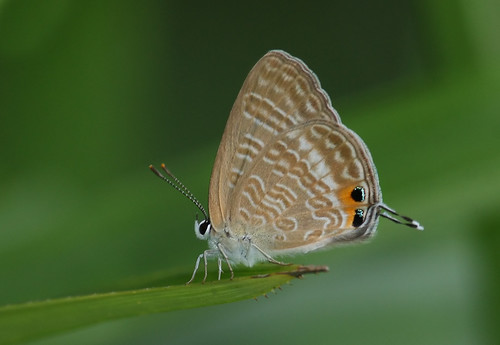
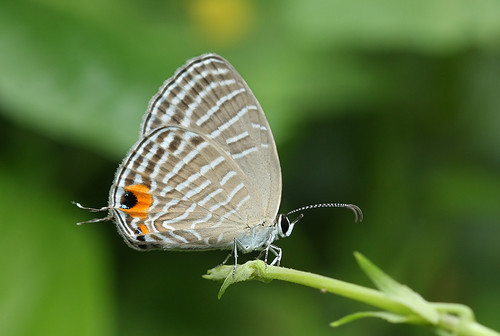


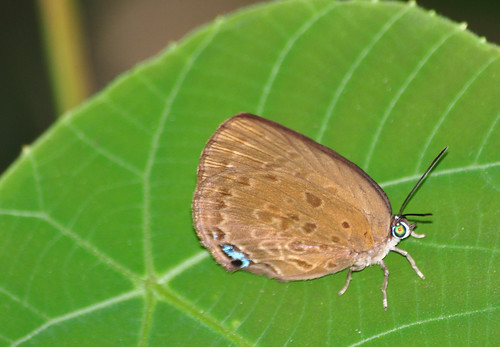

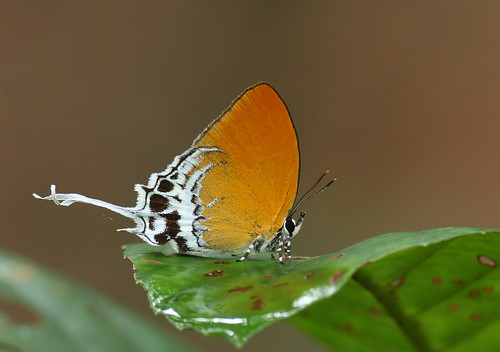





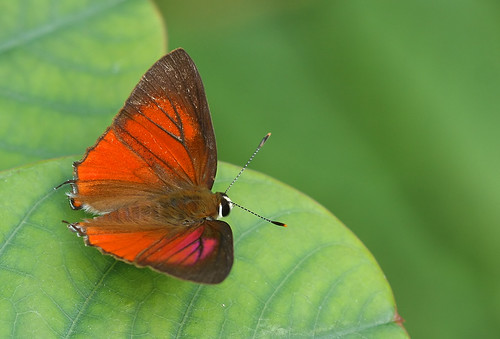






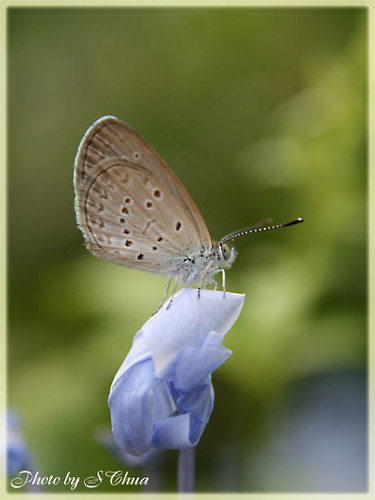
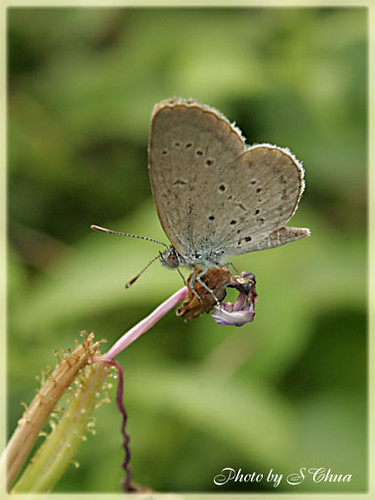
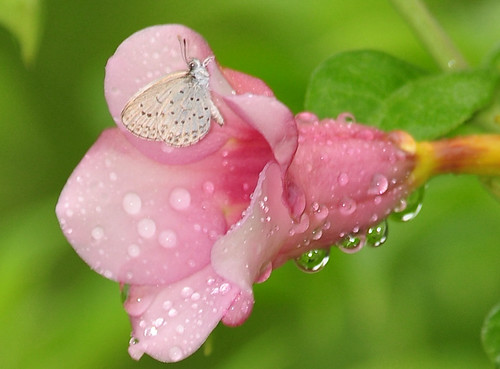



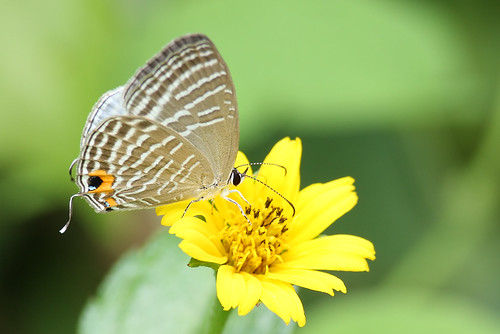





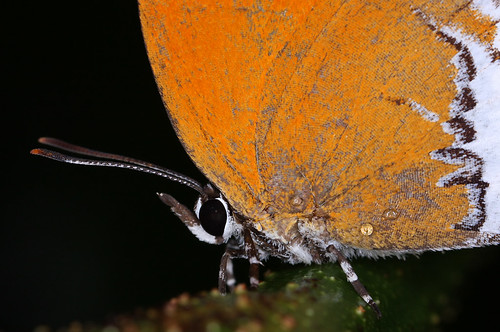





No comments:
Post a Comment